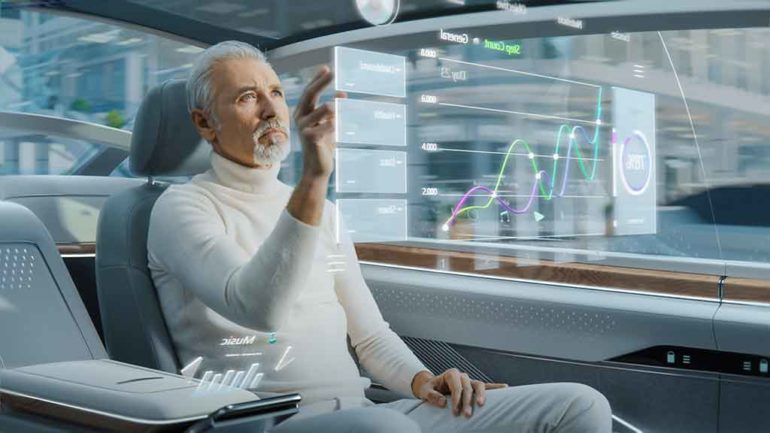Starting off with one of the most exciting emerging UI capabilities, gesture recognition is the multidimensional continuation of gesture swiping. Whilst the latter essentially requires a touch display for easy gesture navigation, gesture recognition requires no actual physical contact with a tech device in order for that device to follow through on a user-initiated action.
For instance, if you’d like to adjust the volume on a smart home speaker that’s fitted with a motion sensor for gesture recognition, then you could potentially adjust the volume by making a ‘winding up’ or ‘winding down’ motion with your hand rather than having to make physical contact with the speaker itself!
Naturally, gesture recognition has become even more of a priority to tech developers following the COVID-19 pandemic, as zero-contact alternatives to procedures like tapping the pedestrian button at traffic lights or even opening the doors to a train, can effectively bolster any society’s defences against bacterial diseases. In essence, gesture recognition has become a flourishing market in itself and this UI capability is likely going to become a highly prevalent feature both in future personal technologies as well as in urban infrastructure.
Virtual reality and augmented reality
When it comes to ‘Minority Report’-esque user interfaces which use projected holographic environments with interactive elements, it’s worth noting that there are actually multiple technologies required in the development and production of this style of highly multidimensional user interface. The first is gesture recognition through cameras or sensor tech, and the second is augmented reality capabilities.
Augmented reality differs from virtual reality in just one aspect, this being that augmented reality takes existing physical settings as they appear to us (i.e. your bedroom, your office space, etc.) and fills it with interactive elements that only exist within the confines of the tech that you’re using. Pokemon Go is an evergreen example of augmented reality, alongside every sci-fi film that depicts a team of intergalactic navigators sitting at control panels with holographic gauges.

